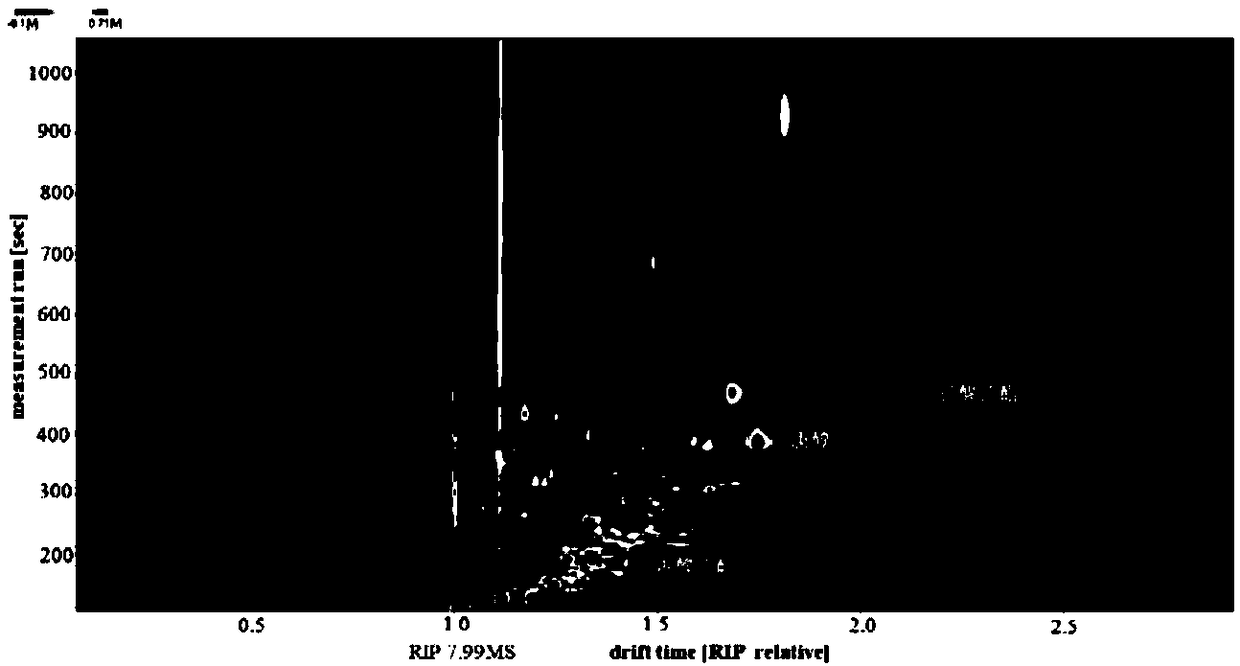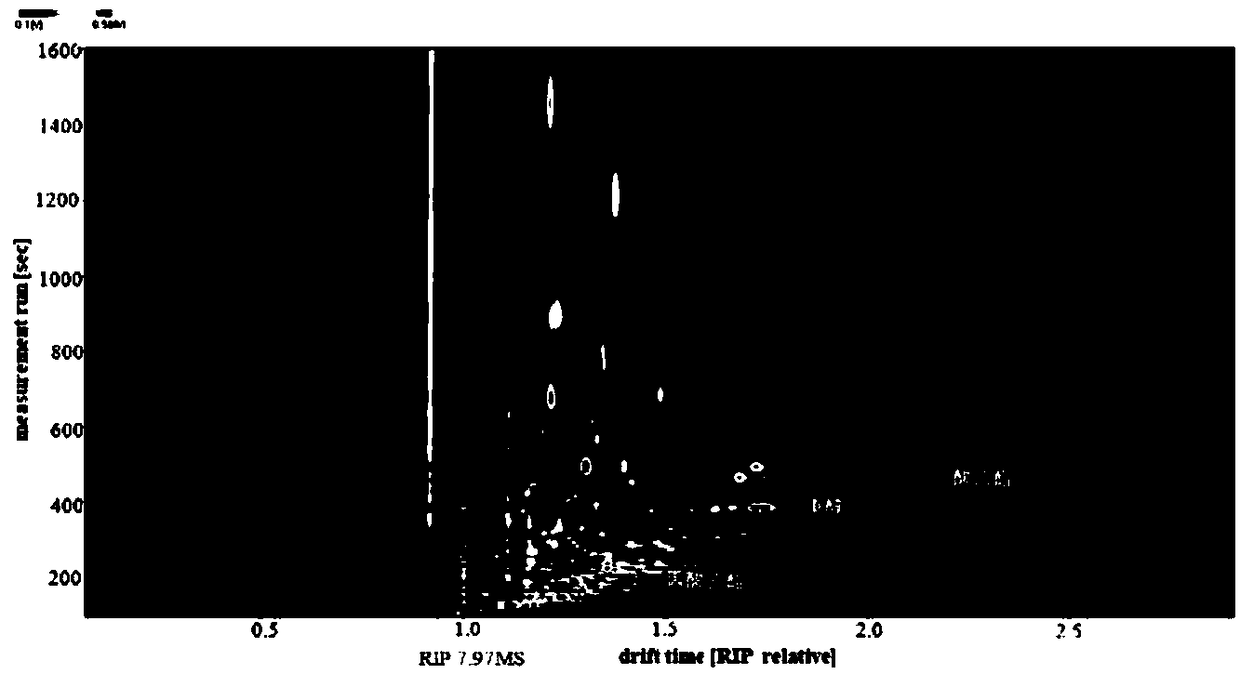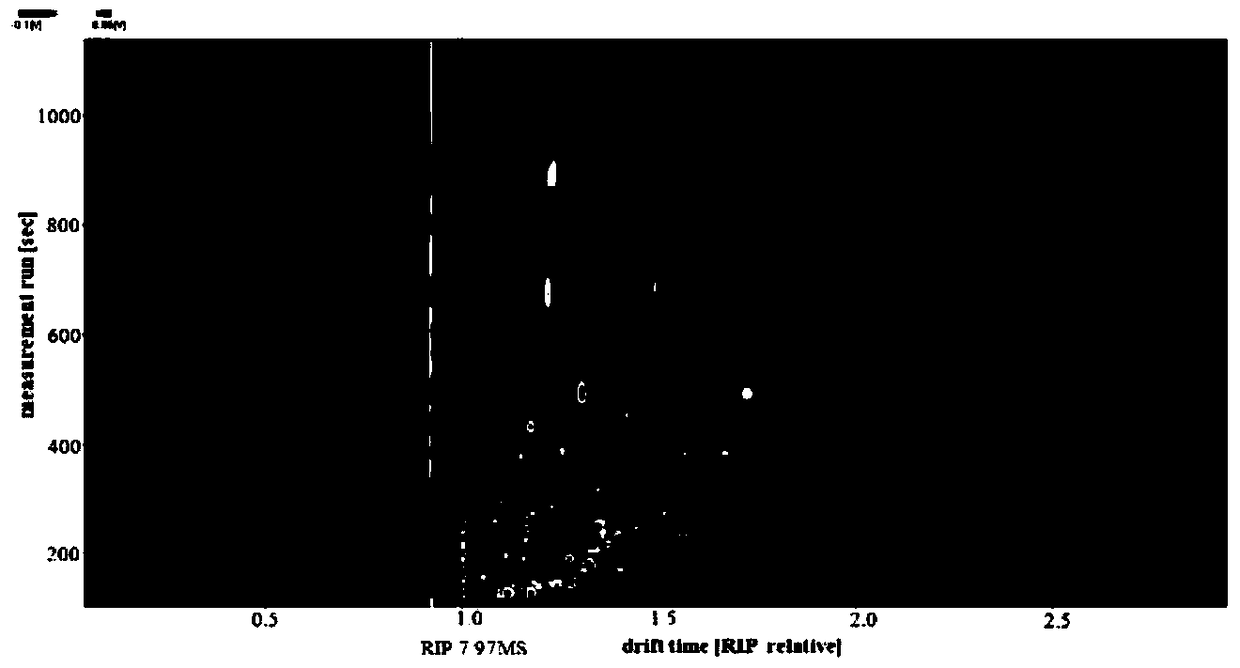Method for detecting doping of antibiotic filter residues in rapeseed meal
A technology of antibiotics and rapeseed meal, which is applied in the field of detecting whether rapeseed meal is mixed with antibiotic filter residue, can solve the problems of endangering the health of farmed animals and affecting food safety, and achieve the effects of short detection time, accurate discrimination and non-destructive testing
- Summary
- Abstract
- Description
- Claims
- Application Information
AI Technical Summary
Problems solved by technology
Method used
Image
Examples
Embodiment 1
[0038] (1) Sample pretreatment
[0039] Rapeseed meal, streptomycin filter residue, and rapeseed meal mixed with streptomycin filter residue (10%, m / m) were respectively pulverized by cyclone mill, and the particle size after pulverization reached 18 mesh. Weigh 0.5 g of crushed samples into clean glass headspace bottles respectively, seal with rubber stoppers, and seal with aluminum caps to ensure that the headspace bottles are airtight.
[0040] (2) Static headspace volatile component collection
[0041] Place the headspace vials filled with samples on a heat incubator for heating and incubation to promote the release of volatile substances in the sample into the headspace. The heat incubation temperature is 90°C, the incubation time is 10min, and the incubator vibration speed is 500rpm. After the thermal incubation, the volatile components in the static headspace were aspirated with a sampling needle, with a volume of 500 μL and an injection speed of 100 μL / s.
[0042] (3...
Embodiment 2
[0061] (1) Sample pretreatment
[0062] The rapeseed meal, the cephalosporin filter residue, and the rapeseed meal mixed with the cephalosporin filter residue (10%, m / m) were respectively crushed by a cyclone mill, and the particle size after crushing reached 18 mesh. Weigh 0.5g of crushed samples into clean glass headspace vials, seal with rubber stoppers, and seal with aluminum caps to ensure that the headspace vials are airtight.
[0063] (2) Static headspace volatile component collection
[0064] Place the headspace bottle filled with the sample on the heat incubator for heating and incubation to promote the release of volatile substances in the sample to the headspace. The heat incubation temperature is 90°C, the incubation time is 10min, and the vibration speed of the incubator is 500rpm. After the thermal incubation, the volatile components in the static headspace were aspirated with a sampling needle, with a volume of 500 μL and an injection speed of 100 μL / s.
[006...
Embodiment 3
[0082] (1) Sample pretreatment
[0083] Rapeseed meal, colistin sulfate filter residue, and rapeseed meal mixed with colistin sulfate filter residue (10%, m / m) were respectively pulverized by a cyclone mill, and the particle size after pulverization reached 18 mesh. Weigh 0.5 g of the pulverized samples into clean glass headspace bottles, seal with rubber stoppers, and seal with aluminum caps to ensure that the headspace bottles are airtight.
[0084] (2) Static headspace volatile component collection
[0085] Place the headspace bottle filled with the sample on the heat incubator for heating and incubation to promote the release of volatile substances in the sample to the headspace. The heat incubation temperature is 90°C, the incubation time is 10min, and the vibration speed of the incubator is 500rpm. After the thermal incubation, the volatile components in the static headspace were aspirated with a sampling needle, with a volume of 500 μL and an injection speed of 100 μL / ...
PUM
| Property | Measurement | Unit |
|---|---|---|
| particle size (mesh) | aaaaa | aaaaa |
| particle size | aaaaa | aaaaa |
Abstract
Description
Claims
Application Information
 Login to View More
Login to View More - R&D
- Intellectual Property
- Life Sciences
- Materials
- Tech Scout
- Unparalleled Data Quality
- Higher Quality Content
- 60% Fewer Hallucinations
Browse by: Latest US Patents, China's latest patents, Technical Efficacy Thesaurus, Application Domain, Technology Topic, Popular Technical Reports.
© 2025 PatSnap. All rights reserved.Legal|Privacy policy|Modern Slavery Act Transparency Statement|Sitemap|About US| Contact US: help@patsnap.com



